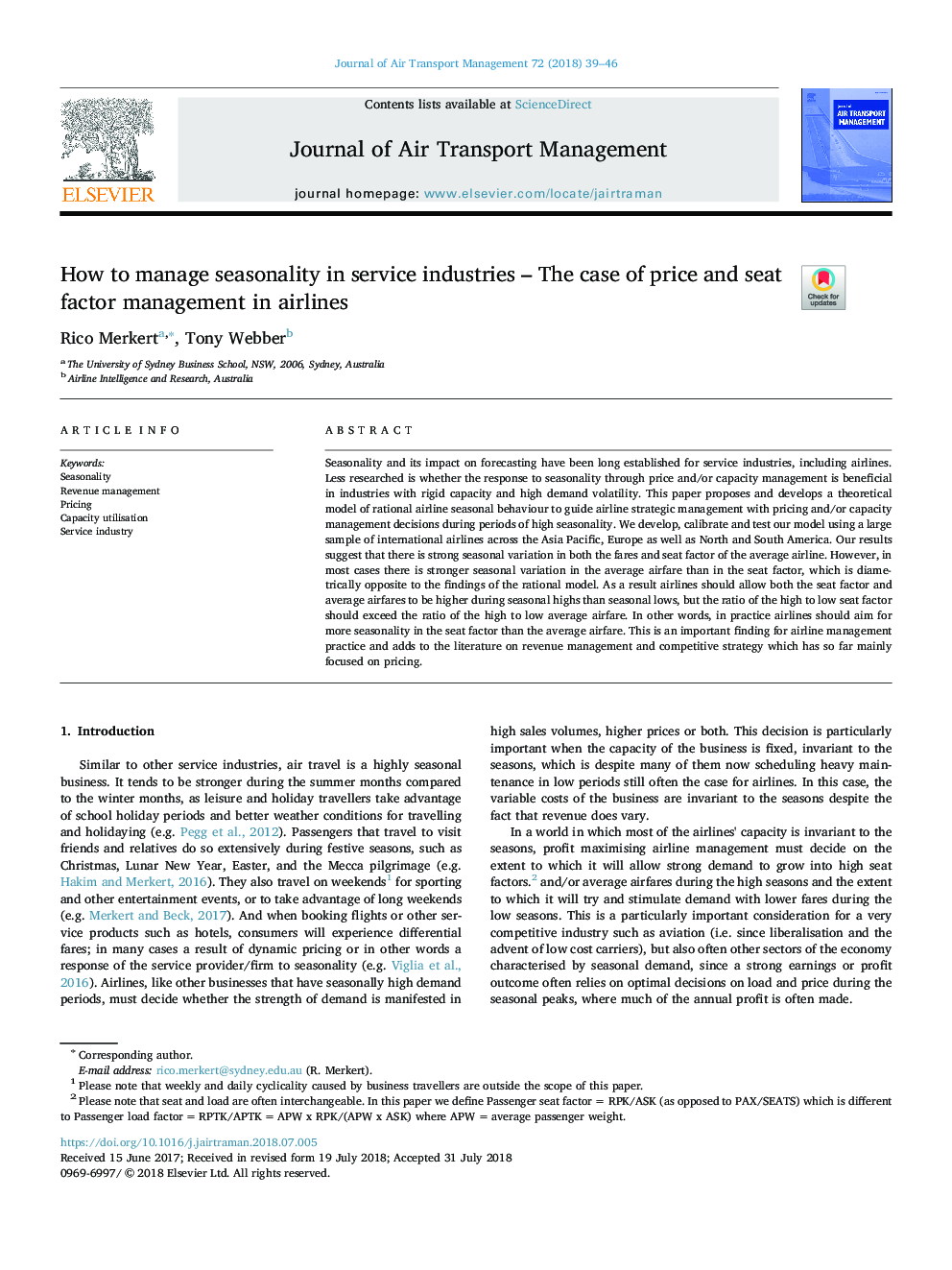| Article ID | Journal | Published Year | Pages | File Type |
|---|---|---|---|---|
| 7434952 | Journal of Air Transport Management | 2018 | 8 Pages |
Abstract
Seasonality and its impact on forecasting have been long established for service industries, including airlines. Less researched is whether the response to seasonality through price and/or capacity management is beneficial in industries with rigid capacity and high demand volatility. This paper proposes and develops a theoretical model of rational airline seasonal behaviour to guide airline strategic management with pricing and/or capacity management decisions during periods of high seasonality. We develop, calibrate and test our model using a large sample of international airlines across the Asia Pacific, Europe as well as North and South America. Our results suggest that there is strong seasonal variation in both the fares and seat factor of the average airline. However, in most cases there is stronger seasonal variation in the average airfare than in the seat factor, which is diametrically opposite to the findings of the rational model. As a result airlines should allow both the seat factor and average airfares to be higher during seasonal highs than seasonal lows, but the ratio of the high to low seat factor should exceed the ratio of the high to low average airfare. In other words, in practice airlines should aim for more seasonality in the seat factor than the average airfare. This is an important finding for airline management practice and adds to the literature on revenue management and competitive strategy which has so far mainly focused on pricing.
Related Topics
Social Sciences and Humanities
Business, Management and Accounting
Strategy and Management
Authors
Rico Merkert, Tony Webber,
